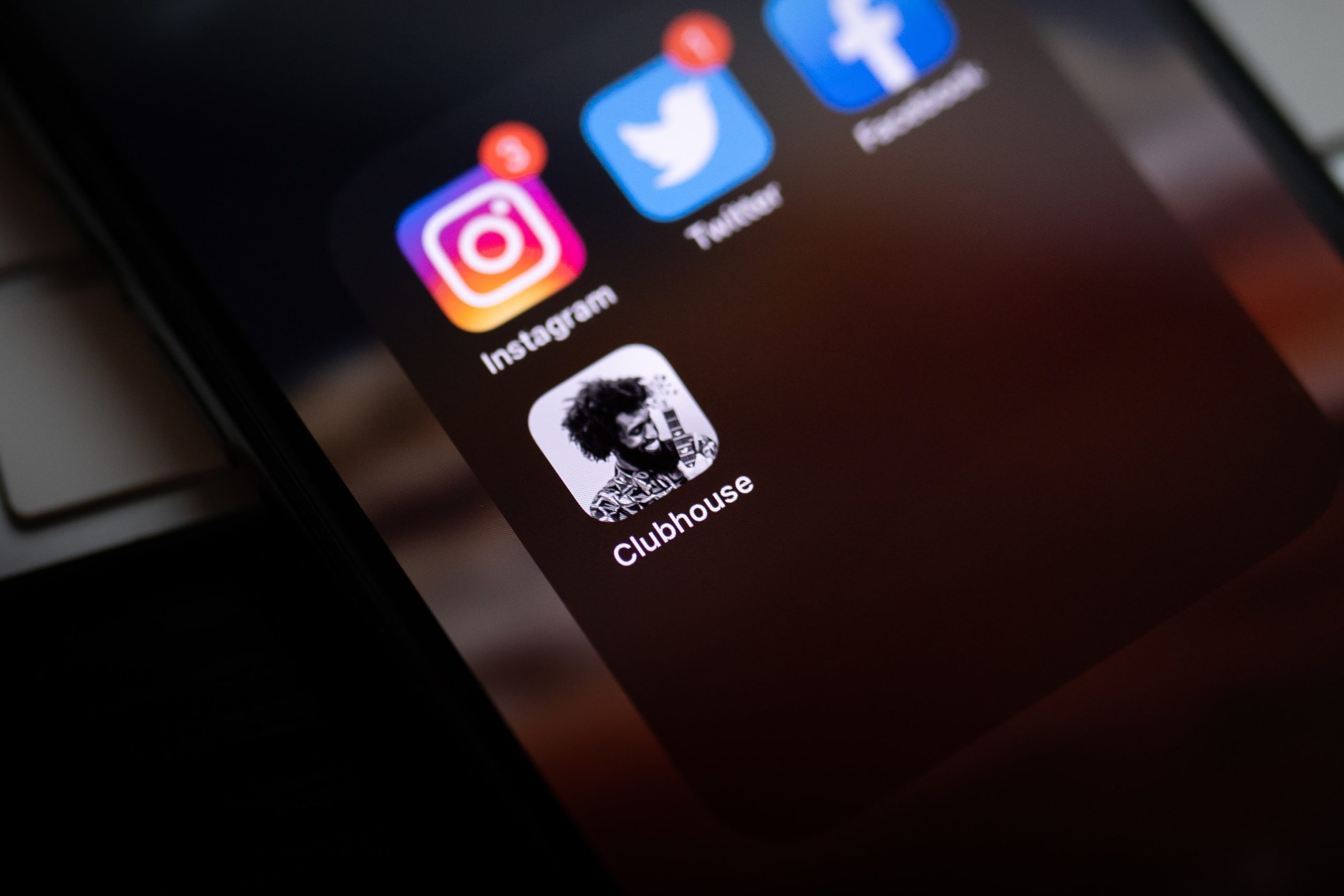CONTACT
SIGN UP FOR OUR INSIGHTS BLASTS

Related
Articles
In the News, Press Releases
Jul 09, 2025
STAGWELL LAUNCHES STAGWELL MEDIA PLATFORM (SMP), A CENTRALIZED TEAM OF GLOBAL MEDIA, TECHNOLOGY AND DATA INVESTMENT EXPERTS

Artificial Intelligence, In the News, Marketing Frontiers, Press Releases, Stagwell Marketing Cloud, Tech
Jun 12, 2025
PRophet, a Stagwell (STGW) Company, Completes Integration of UNICEPTA, Launches Unified Brand and Enhanced Media Intelligence Offering

In the News, Marketing Frontiers, Press Releases, Stagwell Marketing Cloud, Tech
Jun 11, 2025
The Marketing Cloud Launches Cutting-Edge Platform to Simplify Marketing Workflows

Newsletter
Sign Up
By Lindsay Hong, Chief Operating Officer, Locaria
CONTACT
hello@stagwellglobal.com
SIGN UP FOR OUR INSIGHTS BLASTS
Marketing Frontiers is a new series from Stagwell exploring the methods, mediums, and messes modern marketers will grapple with over the next decade as they chart transformation in the discipline. This March, Stagwell is exploring Audio.
TL;DR:
Audio provides disproportionate opportunities to gain cut-through in certain markets and demographics. Localization is the gateway to both accessing the best global content for US consumers, and scaling US brands worldwide.
With no images to aid understanding, successful audio localization has to be high quality, and still requires a human touch.
Approach localization the same as global media planning.
Recent research has shown a renaissance in the popularity of audio content amongst U.S. consumers, with younger segments finding audio more trustworthy than other digital channels. Additionally, as the popularity of shows such as Squid Game has recently shown, consumers in the U.S. have a growing appetite for international content. As brands shore up their global content properties in the coming years, the key to meeting the demand for international and multicultural audio content will be a smart approach to localization.
Engaging US audiences with the best creative work emerging overseas
The US audience benefits from a wealth of high-quality domestic content, produced with big budgets and starring global talent. When seeking impactful international content in this mature environment, the uncomfortable truth is that all creative markets are not equal.
Some markets have prioritized creative industries and are stronger sources for new video and audio content. The focus the South Korean government has put on creative industries as a source of regional influence since the Korean War has contributed to the success of Squid Game. The global content market is huge. As brands look to shore up their international content properties in the coming years, starting with content from markets that have already proven their creative skills in cinema could provide quick wins. For example: in Europe, Germany, France, and the UK are well known for their cinematic prowess, while the Nordic countries offer opportunities with their noir genre. Further afield, India (Bollywood) and Nigeria (Nollywood) already produce English language content, requiring less adaptation for the US.
Once great content has been found, adapting it for US audiences requires linguistic skills and deep cultural understanding. Editorial decisions have to be made in partnership with localization to ensure the original language’s drama, romance, or humor is not lost in translation. Collaborative workflows between creative and production talent are essential for making efficient adaptation decisions. Building audience data into that process can reduce subjectivity, speed up the process and reduce controversy around localization choices.
Leveraging US content to reach international audiences
While US consumers are seeking international content, authentic American stories can also play well globally. In the race to develop an audio content universe, brands should consider tapping into the expansive body of compelling U.S. podcasts and localizing them for international reach.
It’s important to note that audio content, unlike video, provides no visual aids to the consumer to support understanding, so high quality localization is even more important. Developments in AI technology and improvements in home recording equipment are reducing costs and speeding up audio localization, unlocking global audiences. However, as most creative content still requires human intervention and editorial agreement, brands should apply a targeted approach. By investing in localization where brands can have the most impact and utilizing a variety of methodologies to deliver local language content, costs can be controlled. So which markets offer the greatest opportunities to engage audiences with series like Serial or Smartless?
When it comes to the percentage of internet users consuming podcasts:
- Sweden, Norway and Denmark all over-index. The Nordics offer a wealthy consumer base, and a less competitive marketing environment than other European and English-speaking markets, providing attractive opportunities for growth.
- Spanish is becoming the second universal language for podcasting. In 2021, Mexico had a higher podcast penetration than most of Europe. Localizing to Mexican Spanish has the added benefit of offering deeper engagement with US Hispanic audiences.
Lastly, English-speaking markets can be a quick win, but to have real resonance and stand out from the competition, brands should adapt content to local English versions. They should also look at adapting content such as track listings or summaries and consider offering supplemental information explaining certain terms. This makes audiences feel better understood and drives loyalty.
Key Takeaways
- Audio provides disproportionate opportunities to gain cut-through in certain markets and demographics. Localization is the gateway to both accessing the best global content for US consumers, and scaling US brands worldwide.
- With no images to aid understanding, successful audio localization has to be high quality, and still requires a human touch. Locaria’s ISO-certified global network of highly skilled talent ensures messages have impact in any market, and protect your brand from embarrassing mistakes.
- Approach localization the same as global media planning. With an approach similar to media planning, Locaria’s content analysts ensure efficient global scaling of content across all channels, based on business objectives, and respecting budgets.
Learn more about how Locaria can help you scale your content globally here.
—
Locaria is a pioneering multilingual content activation agency which specializes in supporting in-house marketing and e-commerce teams, media agencies and creative production houses. We build linguistic solutions to scale content and campaigns internationally, while carefully balancing efficiency, effectiveness, creativity and quality.
Related
Articles
In the News, Press Releases
Jul 09, 2025
STAGWELL LAUNCHES STAGWELL MEDIA PLATFORM (SMP), A CENTRALIZED TEAM OF GLOBAL MEDIA, TECHNOLOGY AND DATA INVESTMENT EXPERTS

Artificial Intelligence, In the News, Marketing Frontiers, Press Releases, Stagwell Marketing Cloud, Tech
Jun 12, 2025
PRophet, a Stagwell (STGW) Company, Completes Integration of UNICEPTA, Launches Unified Brand and Enhanced Media Intelligence Offering

In the News, Marketing Frontiers, Press Releases, Stagwell Marketing Cloud, Tech
Jun 11, 2025
The Marketing Cloud Launches Cutting-Edge Platform to Simplify Marketing Workflows

Newsletter
Sign Up
CONTACT
hello@stagwellglobal.com
SIGN UP FOR OUR INSIGHTS BLASTS
Amid the global consumer craving for new experiences driven by the pandemic, social audio bloomed in popularity through 2020 and 2021. A year later, some of the buzz around the platform driving the trend – Clubhouse – has fizzled, but experiments in the space from key social platforms like Twitter and Reddit, and audio superstar Spotify, show there’s still terrain to be mapped. But are consumers into social audio? What opportunities does the content create? And what are the barriers to widespread adoption and growth that brands should be on the lookout for? Stagwell’s experts from KWT Global, HUNTER, and Meat & Produce address where social audio is headed in 2022.

Niche Will Drive the Social Audio Experience
Jessica Spar, SVP, Digital, KWT Global
Social audio isn’t going anywhere any time soon, but the bigger questions are: Who is tuned in? And where? Clubhouse was meant to be the next big thing, but its fifteen minutes of fame have passed. Was this because the format didn’t ultimately have long term potential? Or because it was a good idea with poor execution? Twitter Spaces seems to be banking on the latter, yet with significant shifts in the cultural and social landscape over the last few years, Twitter may not be primed for the success it expects.
 Twitter is counting on mass appeal for Twitter Spaces based on its 300 million+ monthly users. However, the masses are moving in a different direction – younger audiences are increasingly leaning into Instagram and TikTok as their platforms of choice, with video as the dominating medium. Social audio has a completely different definition on these platforms. Where Clubhouse and Twitter Spaces focus on live conversation, TikTok and Instagram’s definition of social audio includes everything from audio remixes to sharing the latest sound trends, which doesn’t require the same level of focus, attention, and participation as the live conversational formats of Clubhouses and Twitter Spaces.
Twitter is counting on mass appeal for Twitter Spaces based on its 300 million+ monthly users. However, the masses are moving in a different direction – younger audiences are increasingly leaning into Instagram and TikTok as their platforms of choice, with video as the dominating medium. Social audio has a completely different definition on these platforms. Where Clubhouse and Twitter Spaces focus on live conversation, TikTok and Instagram’s definition of social audio includes everything from audio remixes to sharing the latest sound trends, which doesn’t require the same level of focus, attention, and participation as the live conversational formats of Clubhouses and Twitter Spaces.
To succeed, Twitter Spaces will need to rely on highly engaged niche interest groups, which is a model already owned by Reddit. As a platform founded on niche interest groups, Reddit is now throwing its hat into the social audio ring as well with Reddit Talk. Reddit could succeed where Clubhouse failed (and Twitter Spaces seems to be failing), as they have the framework for success built into their platform already. The platform’s subreddit model and moderation policies lend themselves well to a similar setup for live audio discussion. Clubhouse, on the other hand, was still working through the right setup for rooms when users started to lose interest, and Twitter’s struggles have come in on the moderation side of things. Without clear moderation frameworks, brands may find social audio experiences too risky.
All to say, no clear winner has emerged in the social audio game when it comes to live conversation, so it will be interesting to see which platform, if any, can get it right!
Platform Investment Means Social Audio is Here to Stay
Michael Lamp, Chief Digital Officer, HUNTER
Despite Clubhouse’s fizzle-out, there’s still a ton of heat around social audio. Twitter Spaces has outpaced all its other recent innovations and is driving a lot of thumb-stopping based on the way live Spaces appear in the mobile app (à la IG Stories…just begging to be clicked). Spotify launched its version of audio rooms – Greenroom – in July of 2021 and Facebook continues to promote its Live Audio Rooms with select Creator partners.
 Perhaps most indicative of Social Audio’s staying power, though, is Reddit’s offering: Reddit Talk. A mobile-only product for a while, it rolled out to the web version just this year, adding several new features, including the ability to listen to recorded sessions.
Perhaps most indicative of Social Audio’s staying power, though, is Reddit’s offering: Reddit Talk. A mobile-only product for a while, it rolled out to the web version just this year, adding several new features, including the ability to listen to recorded sessions.
Beyond these specific products offered by existing platforms, the broader trend of sensorial social is what we’re watching, buoyed by the staying power of podcasts, ASMR and long-form, audio-as-video content. From sight to sound to virtual realities in the metaverse simulating touch, where will the fight for consumer attention take us next?
Content Creators Hold the Key for the Future of Social Audio
Christine McDermott, VP, Meat & Produce
Amidst the “we’re all in this together” enthusiasm of 2020 (remember after work Zoom drinks? Yea, sorry to remind you…) friends, families and companies jumped into the online world headfirst. The need for connection, exacerbated by the pandemic, was real but screen fatigue quickly set in. This combination created a gateway for an explosion of audio content. While it appeared to have been spurred on by our “unprecedented times,” the audio movement had been building for years with the groundwork laid by the increasing popularity of podcasts.
 This brings us back to Clubhouse: despite downloads having plummeted after the initial hype, every major social platform has continued to invest in the development of audio. Think Twitter Spaces, Facebook Live Rooms and Spotify Greenroom. Notably, the names of these efforts focus on referencing physical locations, highlighting the opportunity audio provides for greater connection and inclusion across hybrid brand ecosystems. Even LinkedIn has recently jumped on the bandwagon, extending their live events to include audio-only events. Audio-only can level a playing field in terms of providing engagement opportunities without judgment on appearance or location (i.e. no need for staged Zoom backgrounds…)
This brings us back to Clubhouse: despite downloads having plummeted after the initial hype, every major social platform has continued to invest in the development of audio. Think Twitter Spaces, Facebook Live Rooms and Spotify Greenroom. Notably, the names of these efforts focus on referencing physical locations, highlighting the opportunity audio provides for greater connection and inclusion across hybrid brand ecosystems. Even LinkedIn has recently jumped on the bandwagon, extending their live events to include audio-only events. Audio-only can level a playing field in terms of providing engagement opportunities without judgment on appearance or location (i.e. no need for staged Zoom backgrounds…)
No social form of social media is an island, or could possibly exist in isolation, and thus the popularity of audio has bloomed beyond audio-only channels. For years, the advice brands and agencies heard from Facebook was to design content for sound-off as well as sound-on. This was based on the insight that most users would consume content while silently scrolling through feeds. Now users discover cultural moments by tapping into trending audio on TikTok; the audio content drives the cultural relevance consumers are seeking in their entertainment consumption.
The key to the future of audio lies in the hands of creators, both from a platform and consumer perspective. The possibilities here are immense: since it is more cost effective to create high-quality audio than video, audio’s proliferation will enable new and underrepresented voices to enter the mainstream. Additionally, audio content and interactions allow for deeper discussions around key issues we face today while simultaneously enabling a greater level of empathy to be built between listeners. Imagine the nuance that voice provides enhancing conversation and discourse, as opposed to the impersonal, text-based comment battles we see across social media so often. Through strategic creator partnerships, our brands can find authentic ways to enter the conversations that are matter to their consumers.
With the ongoing evolutions we are seeing in this space – from increasing formats and channels to greater accessibility options – audio will continue to play a more important role in our social mix, from channel planning to creative development.
Related
Articles
In the News, Press Releases
Jul 09, 2025
STAGWELL LAUNCHES STAGWELL MEDIA PLATFORM (SMP), A CENTRALIZED TEAM OF GLOBAL MEDIA, TECHNOLOGY AND DATA INVESTMENT EXPERTS

Artificial Intelligence, In the News, Marketing Frontiers, Press Releases, Stagwell Marketing Cloud, Tech
Jun 12, 2025
PRophet, a Stagwell (STGW) Company, Completes Integration of UNICEPTA, Launches Unified Brand and Enhanced Media Intelligence Offering

In the News, Marketing Frontiers, Press Releases, Stagwell Marketing Cloud, Tech
Jun 11, 2025
The Marketing Cloud Launches Cutting-Edge Platform to Simplify Marketing Workflows

Newsletter
Sign Up
By Fergus Navaratnam-Blair and Keith Wagstaff, National Research Group
CONTACT
hello@stagwellglobal.com
SIGN UP FOR OUR INSIGHTS BLASTS
Marketing Frontiers is a new series from Stagwell exploring the methods, mediums, and messes modern marketers will grapple with over the next decade as they chart transformation in the discipline. This March, Stagwell is exploring Audio.
TL;DR:
Consumers desire a single platform to satisfy all their listening needs, making the audio streaming wars a hotter competition for attention than video and TV.
The success of global entertainment content in recent years presents a clear opportunity for content development in audio.
Audio streaming is still a nascent space – so prioritize identifying early gaps or “deserts” that can become substantial growth opportunities
The audio streaming wars have been back in the spotlight in recent weeks following a high-profile boycott of Spotify launched by rock legend Neil Young in protest over COVID misinformation on the platform. Across social media, there has been fierce debate about how much responsibility streaming services should take for the content they host—and what ethical and financial obligations these platforms have to the creators who depend on them.
There’s a reason that these debates attract so much media and consumer interest. It’s becoming increasingly clear that the audio wars are a zero-sum game—much more so than TV and film. As a result, it’s impossible to separate the fate of giants like Spotify from the fate of the audio streaming industry at large.
Why is it zero-sum game?
Unlike video streaming, where the average consumer has a subscription to five different services, 83% of Americans prefer to turn to a single audio app to satisfy all their listening needs. And 86% of consumers say that they’re unlikely to start paying for a new audio streaming service within the next six months.
The barriers to entry in this market are exceptionally high. Most consumers simply aren’t willing to use multiple services to track down all the music and podcasts they want to listen to. And once they’ve found a service they like, they’re unlikely to jump ship—especially since doing so usually means abandoning the playlists they’ve lovingly curated over time.
So, what can brands do to attract new users with audio content such a cut-throat and competitive environment? Here are three recommendations from our research:
Find ways to make your users feel closer to the creators they love
Consumers don’t want to be passive listeners anymore; they want to immerse themselves in the creator economy and feel like part of an active, thriving community. 69% of listeners say that they want to do more to support their favorite creators—for example, by buying merch, attending live events, or engaging in micro-payments. And two thirds of them are interested in one day learning how to create audio content themselves.
Focus on creating a truly global content library
The success of overseas streaming content like Squid Game and Money Heist demonstrates that Americans are increasingly willing to engage with media from outside their own country. And the data suggests that this is just as true for audio content. 7 in 10 Gen Zs and Millennials use podcasts as a way of virtually travelling to new places and hearing new perspectives, and 42% of consumers say they’ve started listening to cross-cultural podcasts within the past year.
Identify “audio deserts” and create content to fill those gaps
Despite the boom in audio content over the last few years, not all audiences have been equally well-served by the content on offer. For example, Black and low-income consumers are more likely than other groups to say that they’re not interested in the audio content currently available on the market. Identifying and targeting these audiences that have, so far, been left behind by the streaming boom can help your platform create a resilient niche for itself. And as evidenced by the strong mix of more diverse content dominating the entertainment wars on social and streaming properties, engaging with these audiences can be great for driving growth.
For more on the listening habits of consumers, and what they mean for streaming services, see our full report: Welcome to the Future of Digital Audio.
Related
Articles
In the News, Press Releases
Jul 09, 2025
STAGWELL LAUNCHES STAGWELL MEDIA PLATFORM (SMP), A CENTRALIZED TEAM OF GLOBAL MEDIA, TECHNOLOGY AND DATA INVESTMENT EXPERTS

Artificial Intelligence, In the News, Marketing Frontiers, Press Releases, Stagwell Marketing Cloud, Tech
Jun 12, 2025
PRophet, a Stagwell (STGW) Company, Completes Integration of UNICEPTA, Launches Unified Brand and Enhanced Media Intelligence Offering

In the News, Marketing Frontiers, Press Releases, Stagwell Marketing Cloud, Tech
Jun 11, 2025
The Marketing Cloud Launches Cutting-Edge Platform to Simplify Marketing Workflows

